Blogs
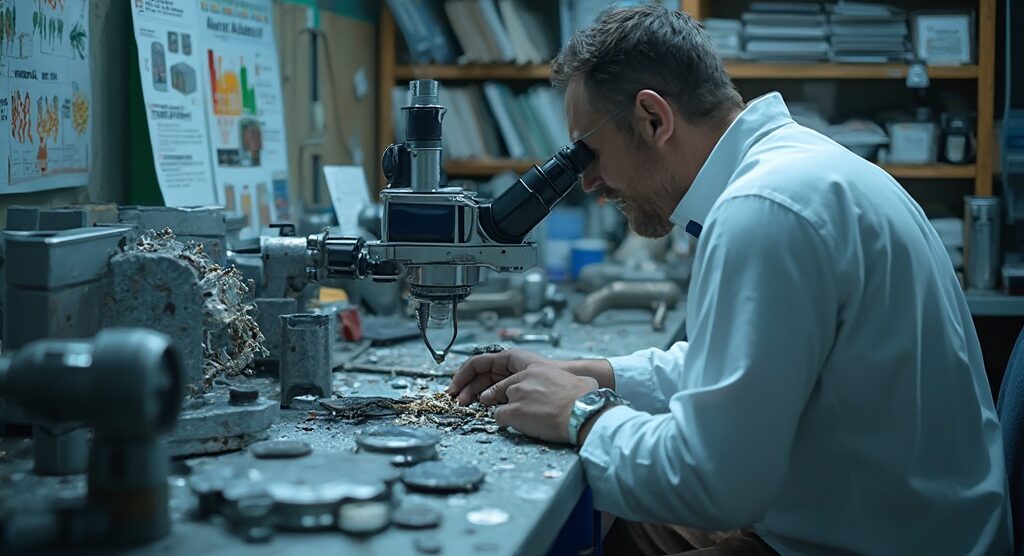
Understanding Metal Degradation: A Complete Tutorial on Corrosion Mechanisms
Introduction
In the intricate landscape of metal procurement, understanding corrosion is paramount for ensuring the longevity and reliability of materials used across various industries. This article delves into the fundamental aspects of metal corrosion, exploring its mechanisms, influencing factors, and effective prevention strategies.
As procurement managers navigate the complexities of material selection, supplier evaluation, and compliance with regulatory standards, a comprehensive grasp of corrosion can significantly impact decision-making processes.
From the critical role of non-sparking tools in hazardous environments to the superior performance of copper nickel alloys in marine applications, the insights presented will equip professionals with the knowledge needed to optimize procurement strategies and enhance operational safety.
Introduction to Metal Corrosion: Understanding the Basics
The gradual metal degradation of alloys occurs due to chemical reactions with their surroundings, significantly affecting sectors such as automotive and electronics. This process can lead to structural failures and considerable cost implications. Metal degradation occurs when metals interact with moisture, oxygen, and other corrosive agents, forming oxides or compounds.
For procurement managers, comprehending deterioration is crucial for making informed choices about:
- Substance selection
- Supplier assessment
- Adherence to global standards
In settings with explosive potential, using Non-Sparking Tools is essential to improve safety. Additionally, Mica Tape Products, including Mica Insulation Tape and Mica Sheet Tape, provide high-temperature resistance and electrical insulation, making them ideal for critical applications in electrical engineering and the aerospace industry.
When evaluating substances for electrical uses, copper nickel alloys are notable because of their excellent resistance to metal degradation, especially in marine settings, as well as outstanding thermal and electrical conductivity, ductility, ease of fabrication, and antimicrobial characteristics. These factors are vital for ensuring reliability and durability in various applications. Compared to stainless steel, copper nickel alloys offer enhanced performance in saline or brackish waters, making them a preferred choice for heat exchangers and other electrical applications.
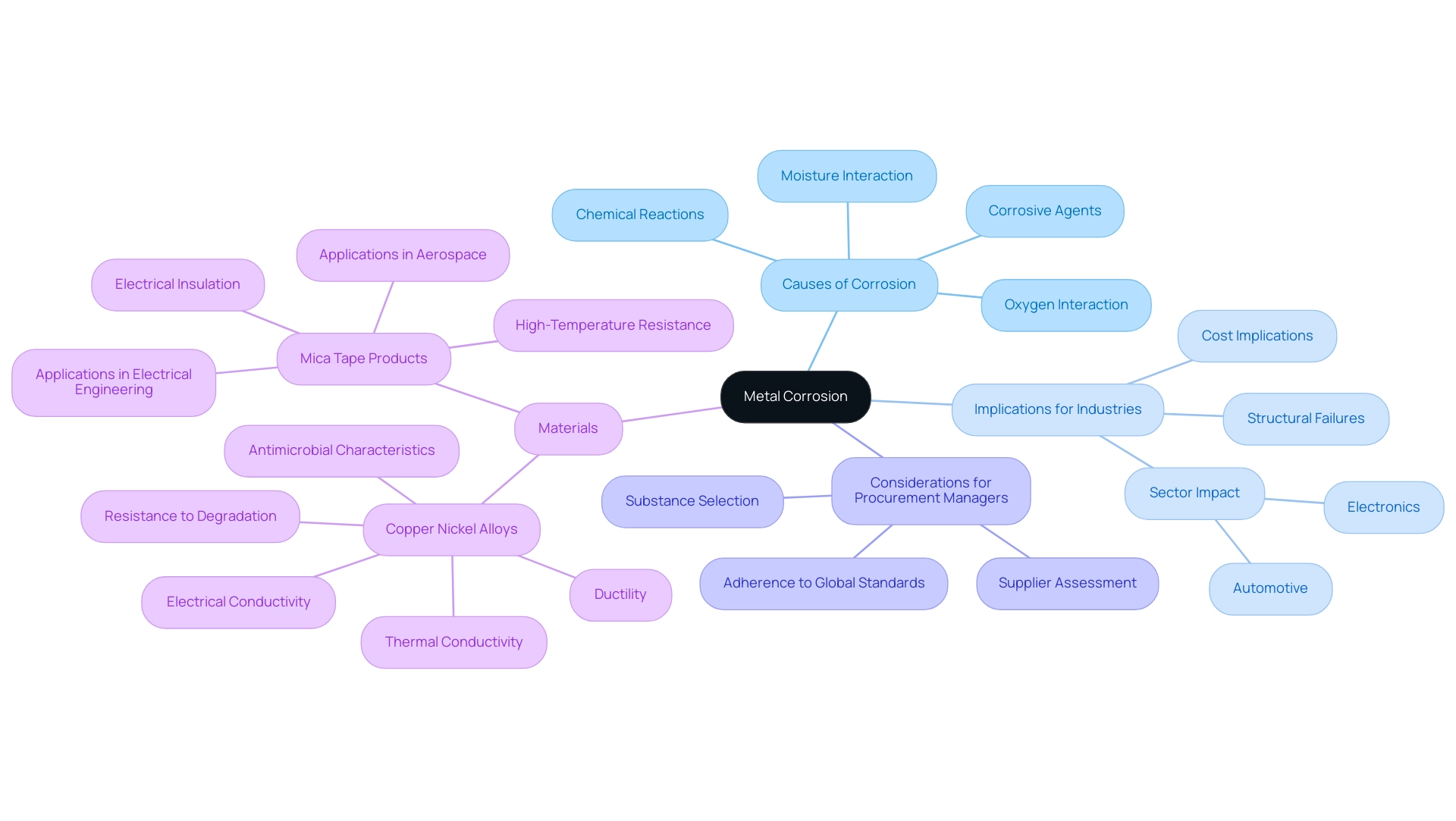
Exploring Different Types of Corrosion Mechanisms
Metal degradation can manifest in several forms, each with distinct characteristics and implications. Common types include:
Uniform Corrosion: This is the most prevalent type, characterized by a uniform loss of substance across the surface.
It is predictable and can often be managed through regular maintenance.Pitting Corrosion: This form involves localized and deep pits forming on the metal surface, often due to the presence of chlorides.
It is especially hazardous as it can result in sudden failures without considerable overall loss.Stress Corrosion Cracking (SCC): Resulting from the interplay of tensile stress and corrosive settings, SCC can result in catastrophic failures in essential applications, making it crucial to consider during selection of substances.
Crevice Corrosion: Occurs in sheltered areas where stagnant water or corrosive agents accumulate, often found in tight joints or under gaskets.
Galvanic Deterioration: This occurs when two distinct metals are in electrical contact within a harmful environment, resulting in accelerated degradation of the more anodic metal.
Comprehending these mechanisms is crucial for procurement professionals to guarantee the selection of suitable substances that prevent metal degradation and to negotiate effectively with suppliers, aligning procurement strategies with industry benchmarks.
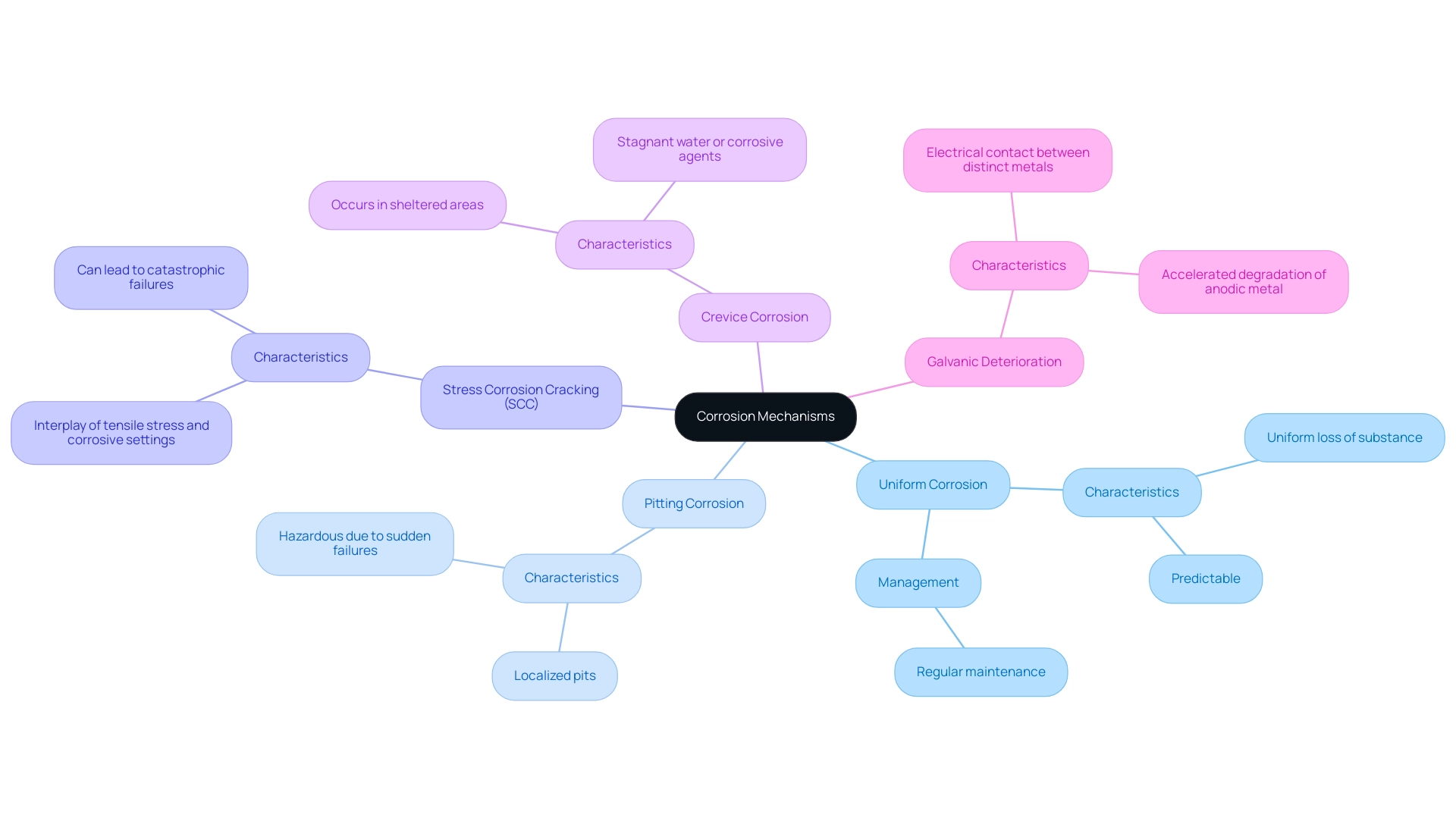
Factors Influencing Corrosion Rates
Multiple elements affect deterioration rates, making it essential for procurement managers to take them into account when choosing materials:
- Environmental Conditions: High humidity, temperature fluctuations, and exposure to pollutants can speed up deterioration processes. For instance, coastal areas with salt exposure can lead to rapid metal degradation of metals.
- Material Composition: The inherent properties of the metal or alloy, particularly the presence of Nickel (Ni), Molybdenum (Mo), and Iron (Fe), significantly influence resistance to deterioration. This particular composition provides excellent resistance to metal degradation, ensuring optimal performance in aggressive environments. For instance, stainless steel is more resistant to rust than carbon steel due to its chromium content.
- Surface Conditions: Surface treatments, coatings, and finishes can either enhance or diminish resistance to rust. Proper surface preparation and protective coatings are vital in preventing metal degradation.
- Electrochemical Factors: The potential for galvanic deterioration increases when dissimilar metals are in contact, especially in corrosive environments. Comprehending the electrochemical series can assist in selecting compatible substances.
By grasping these factors, along with the excellent mechanical properties, high-temperature stability, and precision manufacturing of substances made from Nickel, Molybdenum, and Iron, procurement managers can make informed choices that align with their organization’s specifications and reduce long-term maintenance costs, ensuring structural integrity and longevity.
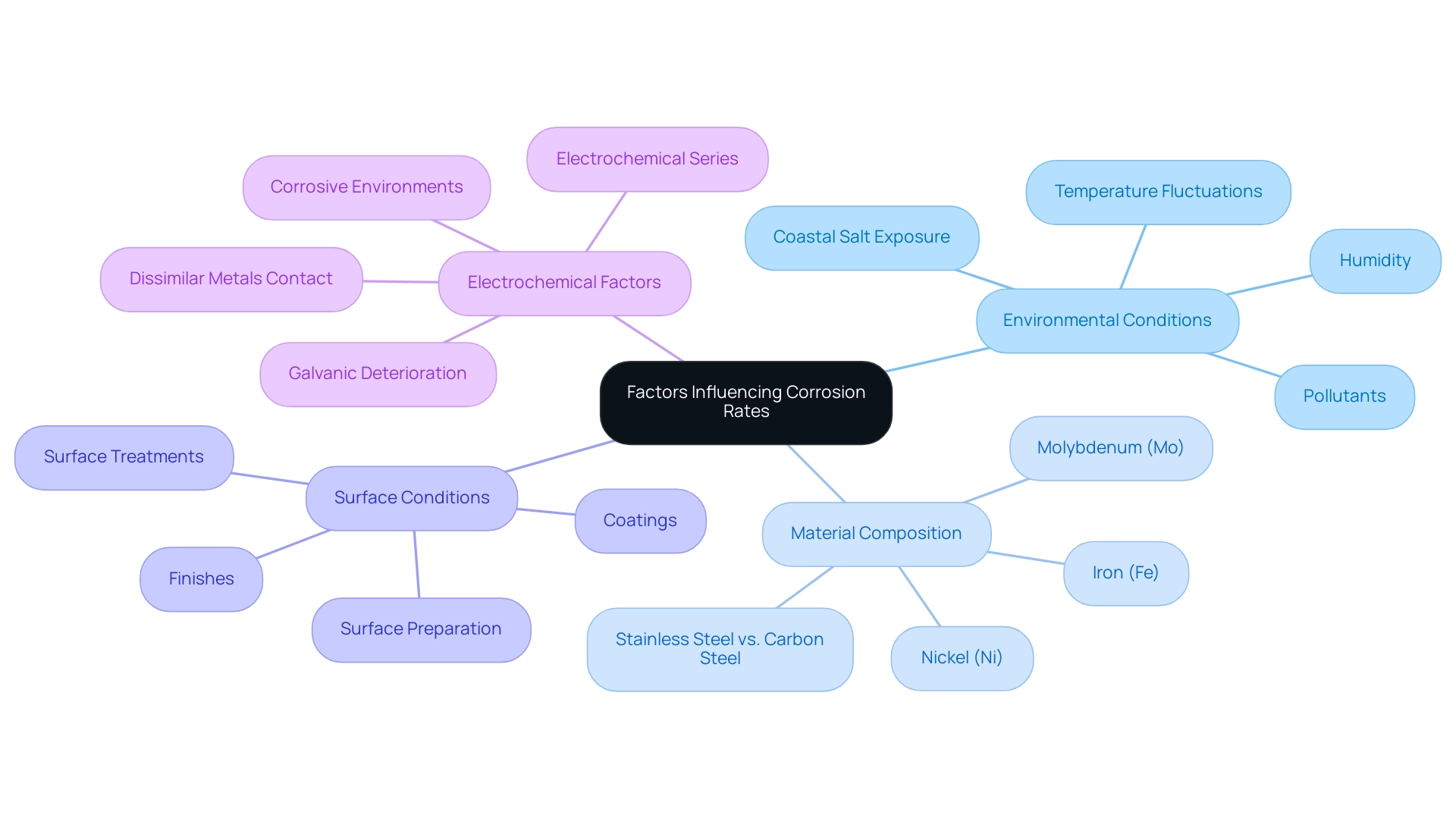
Corrosion Prevention Strategies
To effectively prevent deterioration and enhance safety in procurement, managers can adopt several strategies:
- Material Selection: Choosing materials that resist rust, such as stainless steels, aluminum alloys, or coated substances, can significantly lower the risk of metal degradation. Notably, Beryllium Copper tools are an excellent choice due to their non-sparking properties, high durability, and excellent thermal and electrical conductivity, making them ideal for use in explosive environments. It is essential to follow proper safety guidelines and handling procedures when utilizing these tools to ensure safe usage.
- Protective Coatings: Applying protective coatings, such as paints, galvanization, or powder coating, can provide a barrier against corrosive agents.
- Employing cathodic protection systems, such as sacrificial anodes, can assist in preventing metal degradation in buried or submerged metallic structures. Regular maintenance through a routine program that includes inspections and timely repairs can help identify and mitigate metal degradation issues before they escalate.
- Environmental Control: Reducing exposure to corrosive environments through climate control measures or proper storage can prolong the life of components.
These strategies not only enhance the durability of substances but also contribute to overall cost savings in the supply chain, ensuring that procurement managers make informed decisions about the tools and resources they incorporate into their operations.
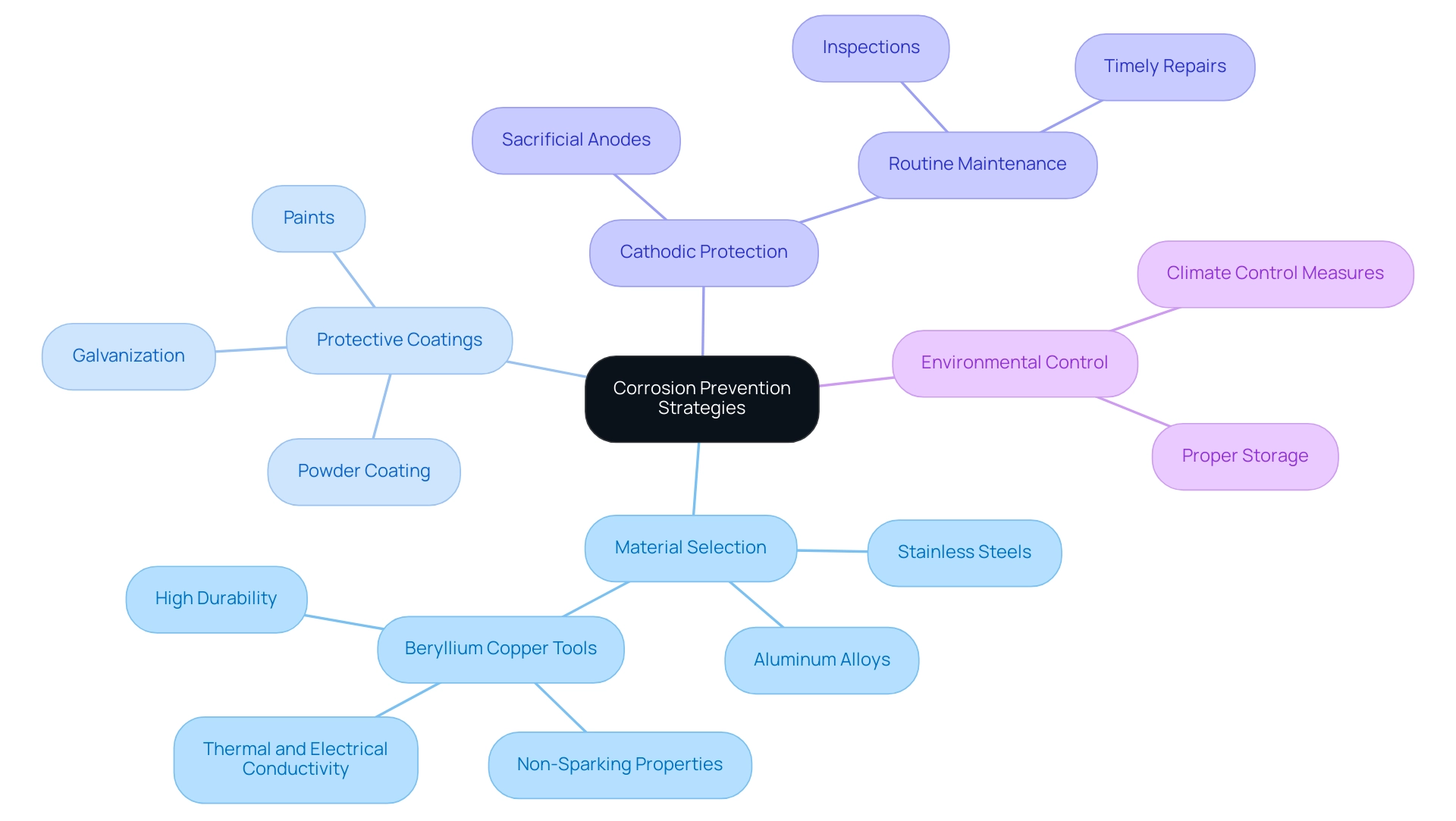
Regulatory Standards and Compliance in Metal Procurement
Procurement managers must be aware of various regulatory standards that affect metal degradation during the procurement of metals, including:
- ISO Standards: The International Organization for Standardization (ISO) establishes various standards concerning quality management, environmental responsibility, and specific properties of substances.
- ASTM Standards: The American Society for Testing and Materials (ASTM) outlines specifications for substances, including testing methods and performance criteria, ensuring they meet required safety and quality levels.
- RoHS Compliance: The Restriction of Hazardous Substances (RoHS) directive restricts the use of specific hazardous materials in electrical and electronic products, impacting material selection in the electronics industry.
- REACH Regulations: The Registration, Evaluation, Authorisation and Restriction of Chemicals (REACH) regulation governs the use of chemical substances in the EU, which can affect sourcing decisions for metals and lead to concerns about metal degradation.
By adhering to these regulatory standards, procurement managers can mitigate risks, ensure product safety, and build trust with stakeholders.
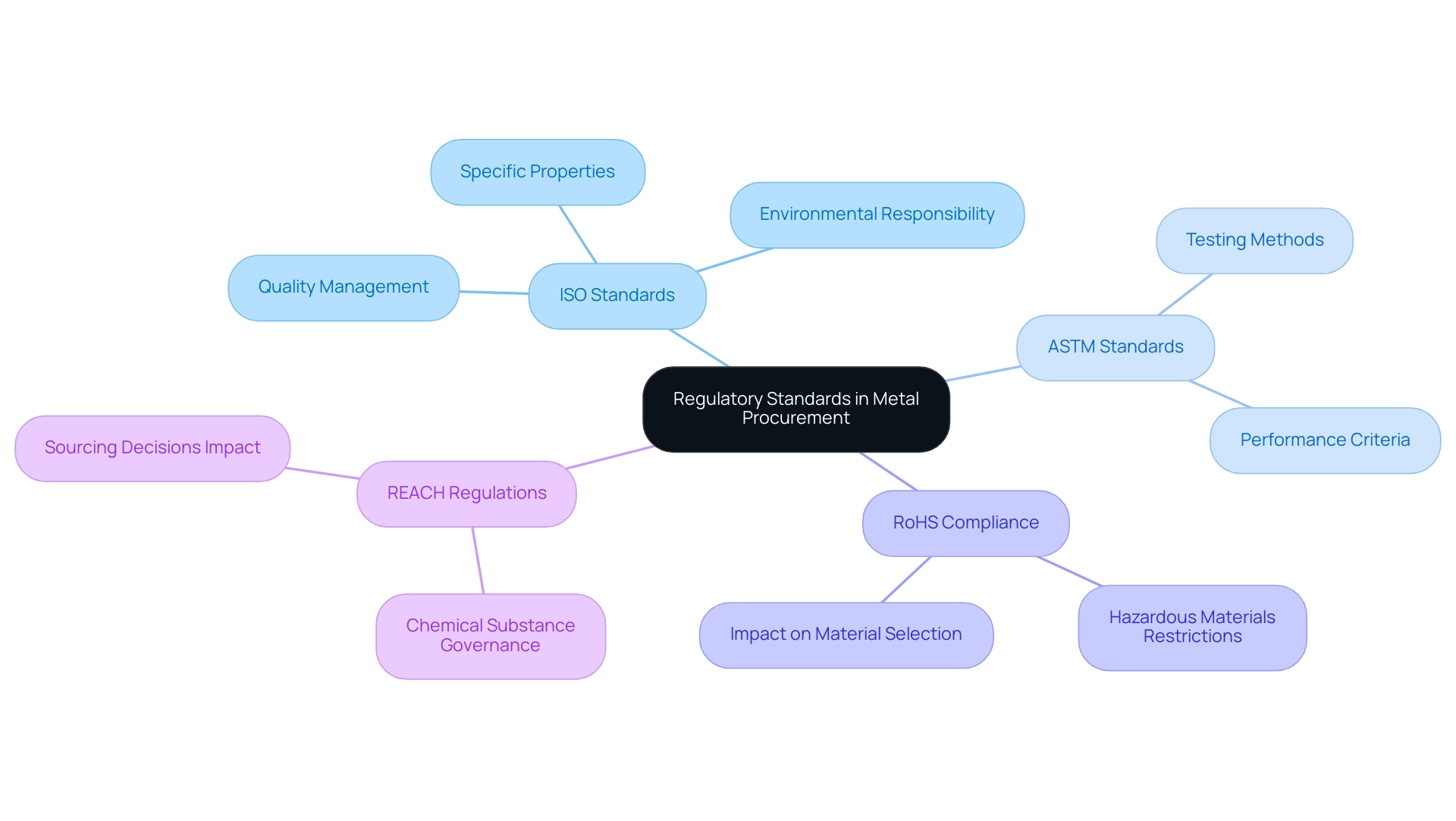
Conclusion
Understanding the intricacies of metal corrosion is essential for procurement managers aiming to enhance the longevity and reliability of materials across various industries. This article has explored the fundamental mechanisms of corrosion, highlighting forms such as:
- Uniform corrosion
- Pitting
- Stress corrosion cracking
Each form presents unique challenges that require strategic material selection and supplier evaluation.
Key factors influencing corrosion rates, including:
- Environmental conditions
- Material composition
- Surface treatments
underscore the importance of informed decision-making. By recognizing how these elements interact, procurement professionals can align their strategies with industry standards, ensuring optimal performance and reduced maintenance costs.
Effective corrosion prevention strategies, such as:
- Selecting corrosion-resistant materials
- Applying protective coatings
- Implementing regular maintenance protocols
are crucial for safeguarding investments and enhancing operational safety. Adherence to regulatory standards, including ISO and ASTM guidelines, further solidifies procurement practices that prioritize safety and quality.
In conclusion, a comprehensive understanding of metal corrosion not only informs effective procurement strategies but also empowers professionals to make decisions that enhance the durability and reliability of materials. By prioritizing corrosion management, procurement managers can significantly impact their organization’s operational efficiency and long-term success.




